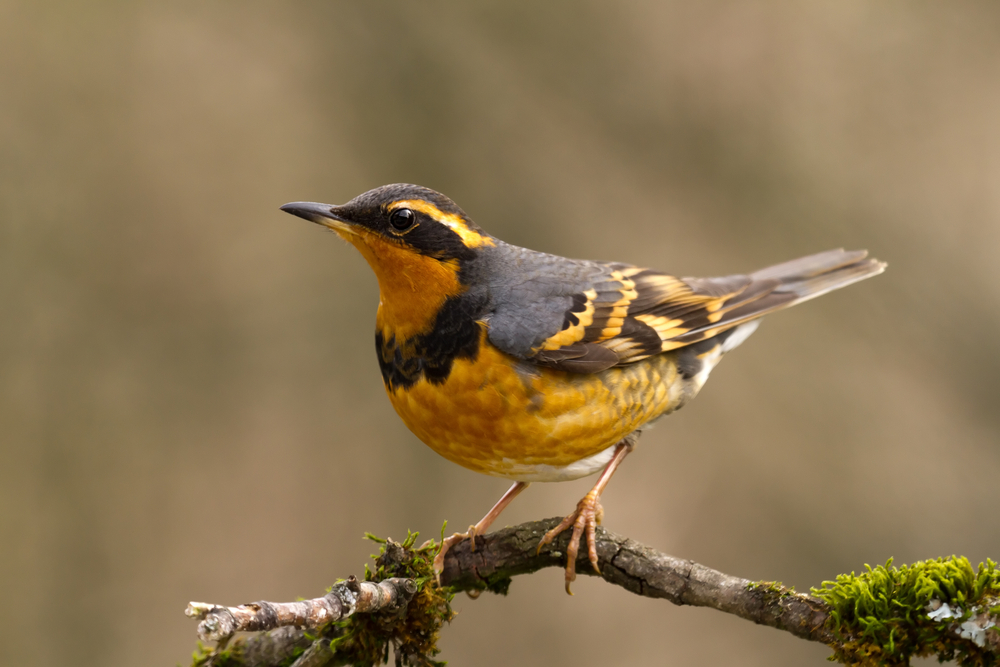The varied thrush is a notable member of the Turdidae family of songbirds. They are most known for their mournful songs echoing through the dense conifer forests in northern North America and their bright orange and black Halloween-inspired plumage.
While the varied thrush shares much in common with the American robin, their secretive nature and mournful mating calls make them stand apart in the crowd.
They’re not easy to find during the breeding season, however, you are more likely to spot them in parts of California and Oregon, where they spend their winters.
What does a varied thrush look like?
The varied thrush (Lxoreus naevius) is easily identified with its distinctive orange eyebrows, black breast band, and orange wing bars. They have very long, slender orange legs, rounded underparts specked with orange and black, and are larger than your average thrush.
While most thrushes are slightly smaller than the American robin, the varied thrush is almost the same size as a robin. At a glance, the varied thrush and robin are quite similar, but there are some very notable differences between these songbirds, especially when it comes to their singing. More on that a little later.
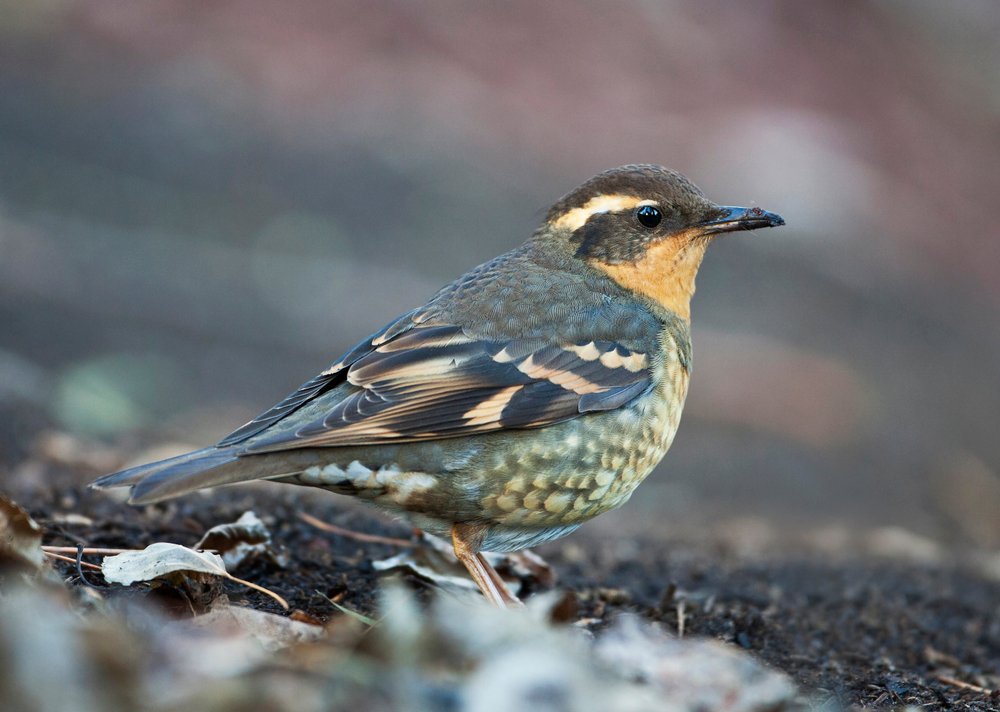
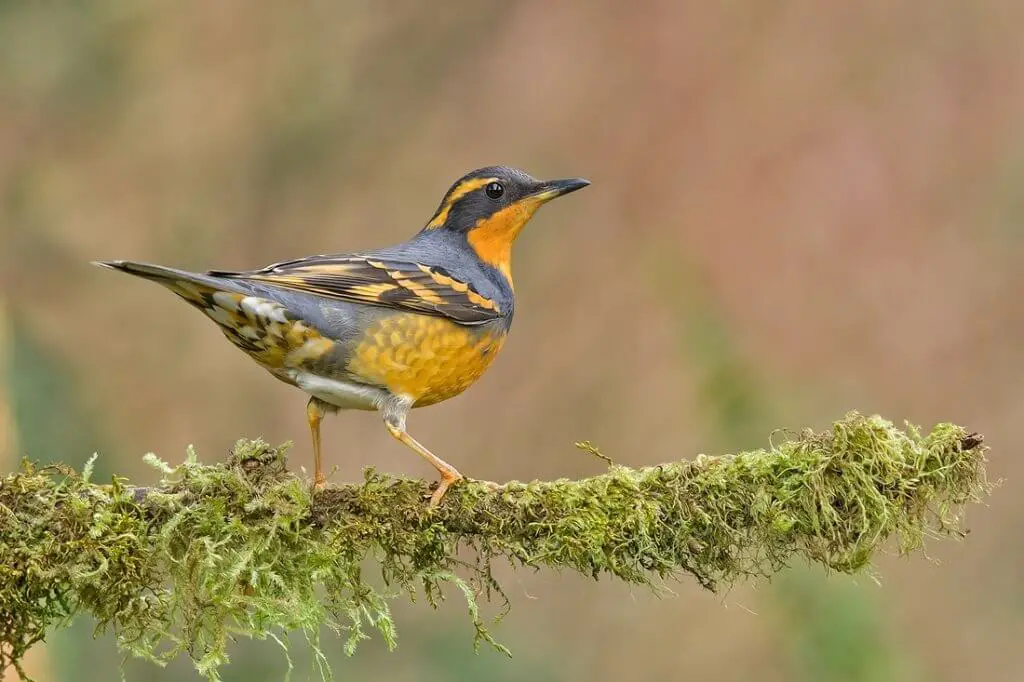
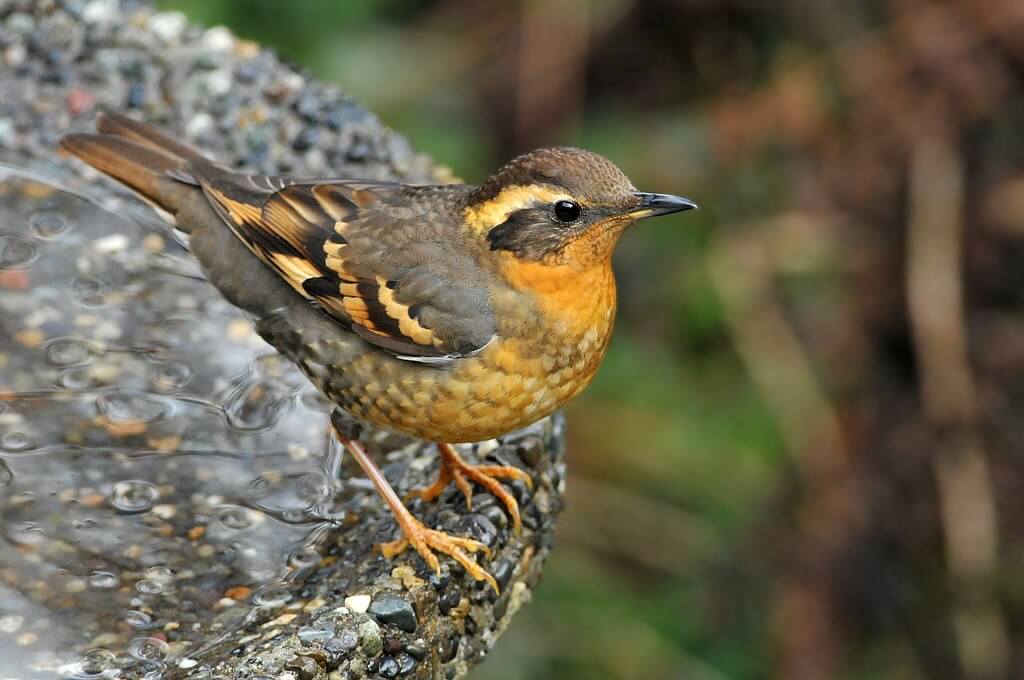
Females vs. Males
Unlike robins, there are very distinctive differences between the male and female varied thrush. While the male boasts striking orange and black feathers, the female’s coloring is much more muted.
Female varied thrushes boast subtle orange streaks and still have the patented orange eyebrows, albeit a lighter shade of orange. Instead of the bold contrast of black feathers, females have an olive shade of green on their wing bars, backs, and underparts.
It’s also important to note that immature males have a similar coloring to females and don’t develop their bright orange coloring until fully matured.
What is the lifespan of a varied thrush?
The lifespan of a varied thrush is relatively short compared to some other bird species. On average, they live for about 2 to 3 years in the wild.
However, some individuals may live longer, possibly up to 5 years or slightly more if they survive the various challenges they face in their natural environment.
Where Do Varied Trushes Live?
During the breeding season, the varied thrush prefers the dense cover of thick pine and conifer forests.
However, they are far more social in the Pacific Northwest in the non-breeding months. Many varied thrushes are spotted in public parks, gardens, and even huddled around backyard feeders in the winter.
What Does a Varied Trush Eat?
During the summer, the varied thrush dines primarily on insects. They use their long slender legs to scavenge through leaf litter, looking for spiders, caterpillars, mealworms, and other protein-rich bugs.
In the winter, they shift their diet from bugs to seeds, berries, and acorns. Unlike other species of thrushes, you can attract these songbirds to your backyard with suet or tray feeders.
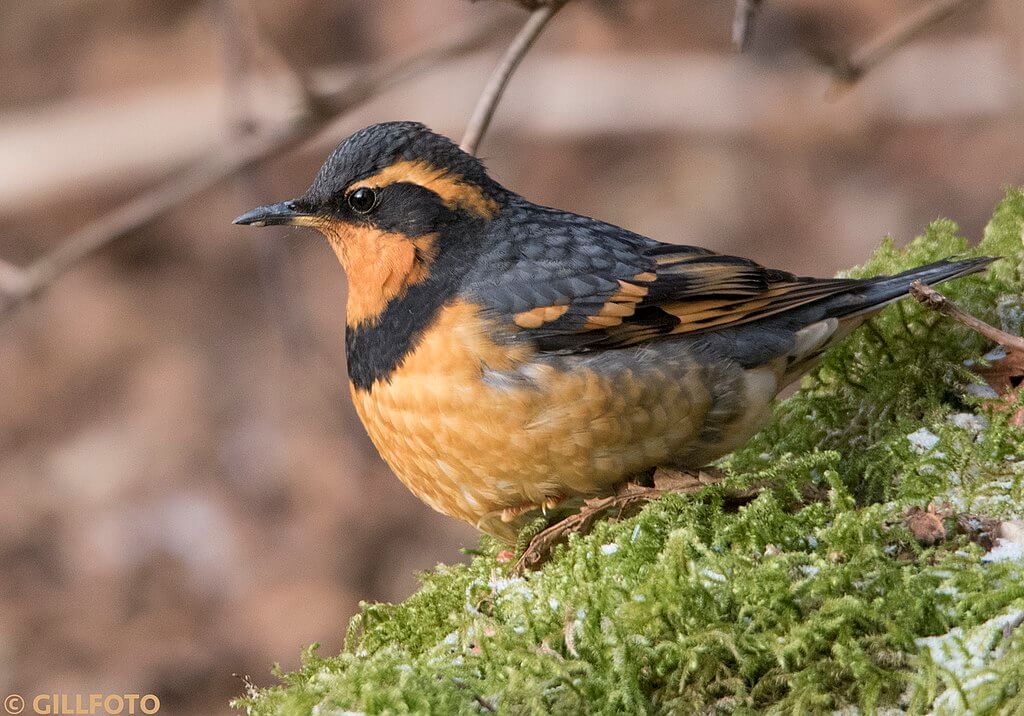
What About Mating, Nesting, and Eggs?
Breeding season for the varied thrush starts in late spring to early summer, typically around mid-May. Males attract female mates by singing as well as defending their territory.
A varied thrush female selects a nesting location, often high off the ground in the branched of a conifer tree, and makes her nest. varied thrush nests are composed of an open cup of plant materials that are a little bulky and cumbersome. They are constructed from bark, leaves, moss, and sticks and lined with rootlets and other soft materials.
After the construction of the nest, the female lays between three to four eggs per clutch. The female incubates the nest alone, and incubation takes up to two weeks. After the young birds hatch, both parents feed the young birds a diet rich in insects.
Does a varied thrush migrate?
Unlike other North American Turdidae, the varied thrush resides along the Pacific coastline. During the breeding season, they live in cooler climates in the north in areas such as Alaska, Canada, and British Columbia.
In the non-breeding months, these short-distance migrants flock slightly south lower elevations of California, Oregon, and some parts of northern Mexico.
What’s interesting about the migration patterns of the varied thrush is that they don’t always migrate along the Pacific coast. In some instances, residents in the eastern portion of the United States have seen sightings of the varied thrush in many parts of the United States, as far east as the Carolinas!
It’s unusual, but it sometimes happens during the non-breeding season. While their breeding grounds and range of migration consists of a small section along the Pacific coast, it’s possible to see wandering flocks of vagrants outside their range map.
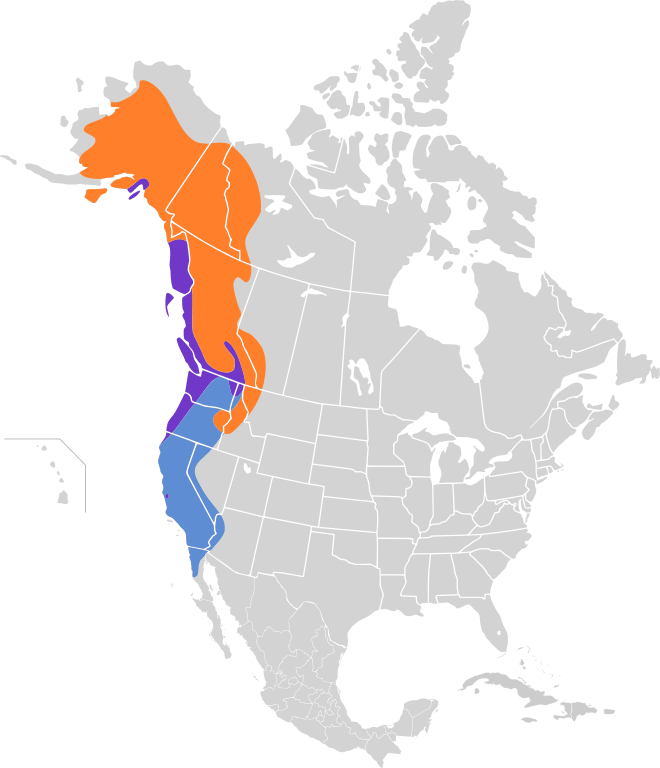
Vocal Repertoire: Songs, Calls, and Sounds
Unlike the cheery American robin, the song of the varied thrush sounds almost mournful. Their flute-like call is accented with minor notes that give their song a sad inflection. Their mating calls are a single note and typically last only a few seconds.
These birds perch high in the treetops to call to a mate and fly to a neighboring branch when their call is not reciprocated.
In addition to mating songs, both the male and female varied thrush have other calls that are unique. When agitated, or they sense the presence of a predator, both the male and female emit a low-pitched churr noise.
Are Varied Thrushes Rare or Endangered?
The varied thrust isn’t endangered, but sightings are rare, especially during the breeding season.
Since these songbirds breed in thick pine forests with plenty of protection, they aren’t often spotted in areas where many people congregate. However, spotting a varied thrush in the winter is far more common than in the summer.
Varied thrushes spend their winters in lower elevations in the Pacific Northwest searching for acorns, nuts, and berries.
You can even attract them to your backyard birdfeeders with suet and tray feeders filled with their favorite foods.

